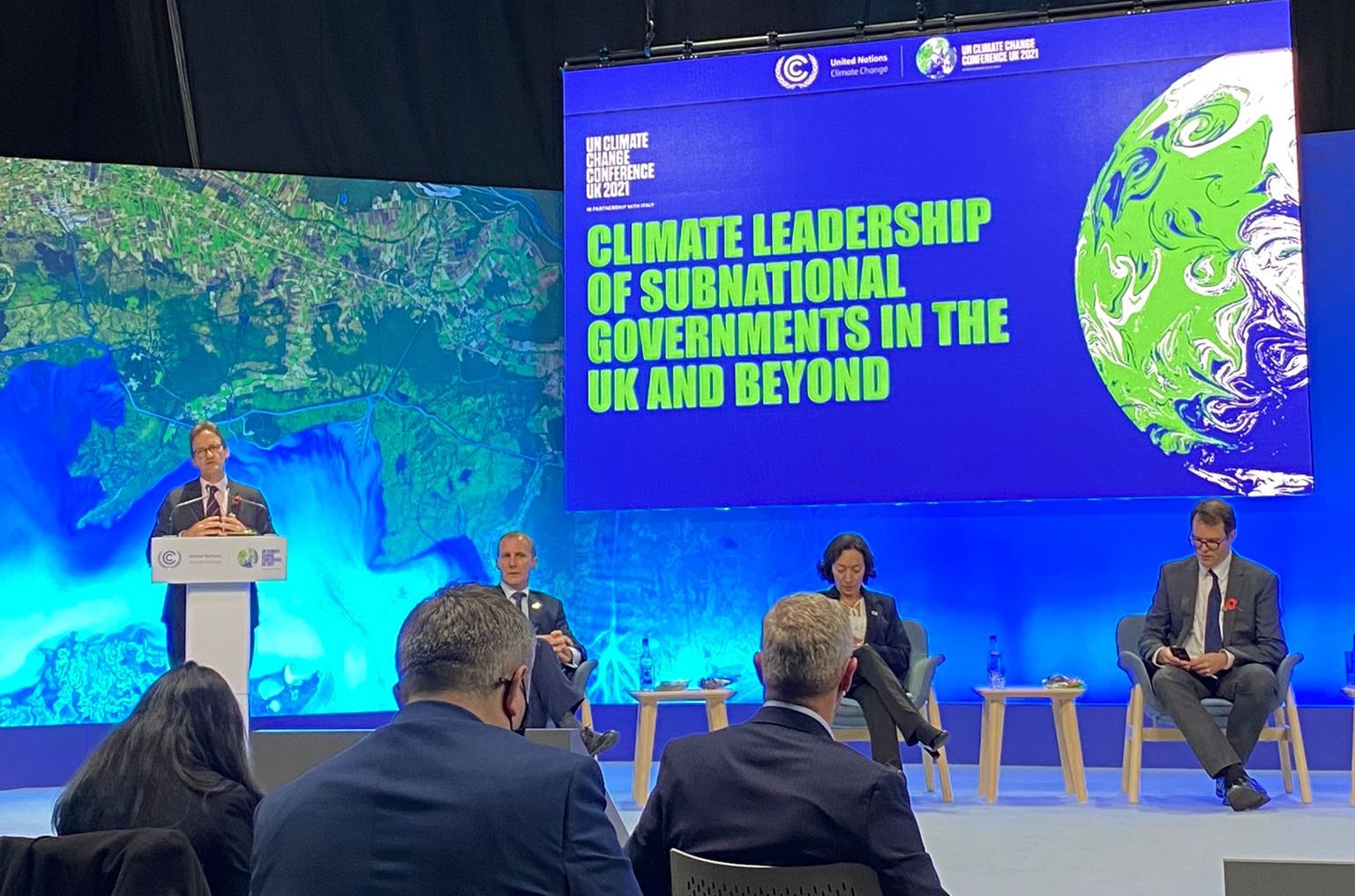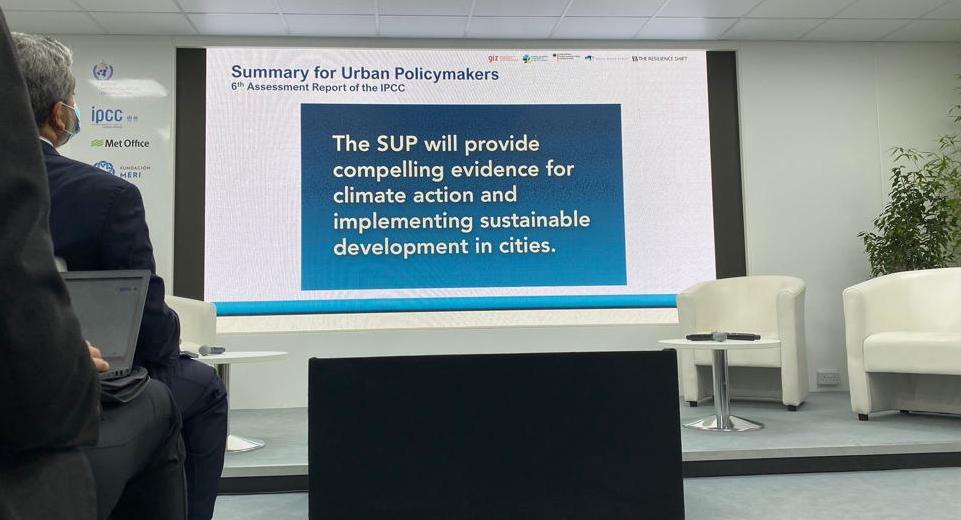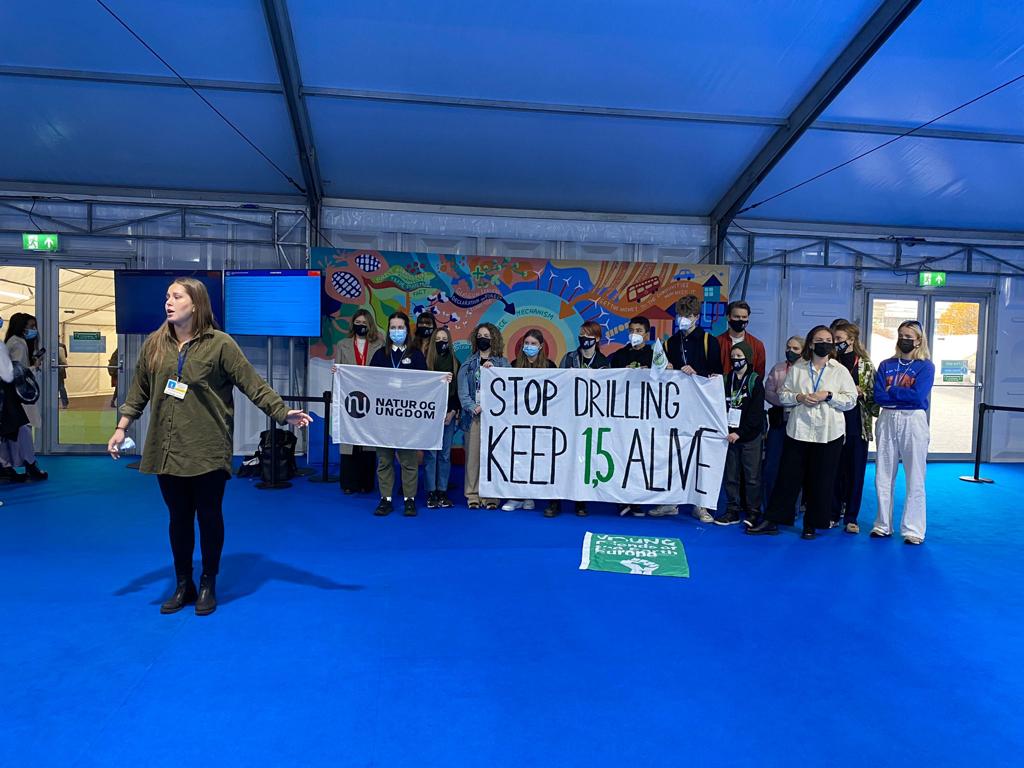
CSH@COP26 Day 11: Cities, Regions and Built Environment
The final themed day of the COP26 presidential programme focused on Cities, Regions, and the Built Environment. This highlighted how cities, regions and communities can be major actors in the climate and nature emergency, offering crucial opportunities to ’act locally whilst impacting globally’.
The IPCC Summary for Urban Policymakers (SUP) report was launched in the science pavilion, with the aim to distil the findings of the IPCC's 6th assessment report for an urban context. The report highlights that the urban viewpoint is critical in adaption and mitigation, and that within the built environment both need to be tackled together.
Contributors to the IPCC SUP report described how the built environment is especially vulnerable to the climate crisis, influencing the social determinants of health that impact so significantly on population health and wellbeing. These include higher temperatures from air trapping in urban heat islands and from reduced ventilation, and heat increased absorption from grey infrastructure. They include the impact of altered water cycle and ground and wastewater to flood risks, also amplified in coastal cities through risk of storm surges. And they include the impact of air trapping, increased population density and increased temperatures which expose many to the devastating consequences of air pollution.

Cities are also a key focus for mitigation due to the emissions generated by increased population density – the impact of which can be experienced outside of the boundaries of the cities themselves. However, the global and local opportunities to the health of people and planet from the co benefits were highlighted as potential motivators for stakeholder engagement.
At the presidency event in the afternoon, it was fascinating to learn how significant the influential cities and regions can be internationally. We heard how many of these ‘subnational actors’ are able to work in their own right locally and regionally and in collaboration (such as through the Under2 coalition) towards the climate and nature emergency, with huge implications for the health of people and planet.
During the UK Pavilion's sessions on local leaders, it was noted that local authorities control 30% of the UK's emissions. The importance of involving local communities in finding solutions and listening to what matters most to them was emphasised, as was the need to ‘collaborate radically’ and share knowledge on regional, national, and global levels. During the session, Sarah Woolnough, CEO of Asthma UK, highlighted the need for health to be central to all policies locally and nationally, particularly in addressing the challenges of air pollution, housing, and transport. In fact, the importance of ‘radical collaboration‘ across all sectors, was mentioned throughout the day. But my personal favourite take-home phrase was from a speaker from the Democratic Republic of Congo talking about the ‘positive complexity’ found in working towards nature-based solutions within landscapes and communities.
Author
Dr Georgie Sowman, CSH Associate
In addition to the presidency events, a few of the CSH delegates attended a World Health Organization (WHO) session on nursing leadership and climate, which included contributions from the International Council of Nurses (ICN) and the Alliance of Nurses for Healthy Environments (ANHE). The presenters emphasised how nursing, as the largest health profession, is strategically located at the intersection of climate and health, having direct contact with those most impacted by climate change. Nurses of all ranks can lead change in a wide range of ways from advocating and challenging on behalf of vulnerable communities to designing research questions in a way that triggers change. System wide recommendations for harnessing nursing’s potentially pivotal leadership role include:
- Accelerate change by leapfrogging nurses into leadership roles
- Give nurses and nursing students the skills they need to create the future
- Rekindle activism, advocacy, and relentless truth telling
- Ensure a global lens by extinguishing Western biases in the climate action agenda of nursing
- Put equity, justice, and morality front and centre
Further detail on these are available in a BMJ article by Butterfield et al, 'Nursing’s Pivotal Role in Global Climate Action'.
Two other resources were mentioned, the ICN core competencies in disaster response and Dr Elizabeth Schenk, Assistant Research Professor at Washington State University, shared the WE ACT framework covering domains of pollution from healthcare. She noted that, despite burnout and overwhelm as a result of Covid-19, many nurses are relieved to talk about climate change.
Author
Rebecca Gibbs, CSH Associate
Further Resources to take action
The Centre for Sustainable Healthcare engages healthcare professionals, health systems, and the wider community to understand the connections between health and environment and reduce healthcare’s resource footprint. Guided by the four principles of sustainable clinical practice (prevention; patient empowerment and self care; lean systems; and low carbon alternatives) our programmes equip healthcare professionals and organisations with methods and metrics for sustainable models of care. Specifically, CSH can assist cities, regions, and communities in taking climate action in the following ways:
- Our Public Health Leadership for Sustainability course prepares public health leaders to engage local governments in reimagining healthy urban environments.
- Our Green Space and health programme improves the quality and use of green space at healthcare sites for patients, staff and the wider community. The NHS Forest is our flagship project which plants trees and greens NHS sites.
Stay up to date with health news from COP26
Through the representation of 10 members of our network, the Centre for Sustainable Healthcare (CSH) is attending the Blue Zone negotiations and presidency programme events as an official observer. To increase transparency and feedback to the health community throughout the COP26 summit, CSH is publishing a daily recap blog summarising the latest developments, health implications, and potential solutions. These blogs are linked from our CSH@COP26 page.


